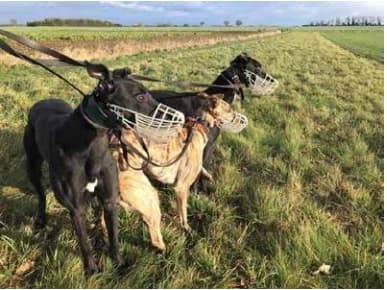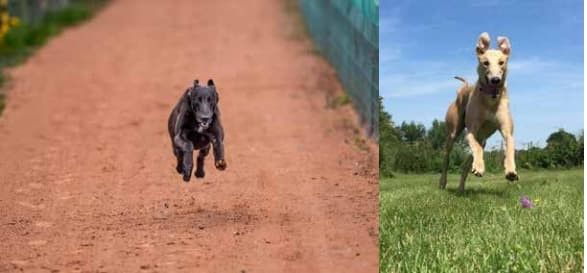Greyhound racing is more than just a spectacle; it's a sport filled with excitement. However, to transform a dog into a champion, a good pedigree and leadership qualities alone are not sufficient. It requires the expertise of a trainer who can recognise the dog's talent and shape it into a formidable runner.
While owners can train their dogs, professional trainers in kennels often excel in this role. Kennels offer optimal conditions for maintaining dogs' health and fitness. However, preparing for competitions in a home environment can be more labour-intensive. The complexity of the training process is also reflected in the cost of keeping a dog in the kennel, amounting to about £5,000 per year.
The Greyhound Board of Great Britain (GBGB) establishes standards in its Rules of Racing, outlining an individualised training program for each dog in the kennel. The foundation for any young greyhound's training includes a balanced diet, disease prevention, and injury avoidance, along with regular exercise. Greyhounds can start racing from 15 months of age, with training beginning around 10-12 months.
Trainers tailor their approach to suit the needs and abilities of each dog. Greyhounds have sensitive nervous systems and do not respond well to physical punishment or loud shouts. Positive reinforcement proves to be more effective, enhancing the confirmed quality of their behaviour.
The primary forms of physical activity for dogs in the kennel include free running in the paddock, playing, walking, jumping, swimming, and running on the track.
Walking on a lead is a crucial aspect of greyhound training. An aggressive, restless, or uncontrollable dog won't be permitted on the racetrack. Therefore, while still a puppy, a greyhound is trained in discipline and obedience.

Regular walks are particularly enjoyed by both dogs and kennel workers. In public areas, staff are advised to walk no more than two dogs, although experienced workers may take up to 6 dogs with them on walks. Each dog should have a tag on its collar with the trainer's name and address. These walks keep them fit, are invigorating, and prepare them for a gallop on the track.

Galloping area – dogs relish running on grass, a sandy track, a path sprinkled with sawdust, or an artificial turf path.

Walking or running on a treadmill - the treadmill is an excellent way to keep greyhounds active. They gradually become accustomed to it, do it without pressure, and are never left alone on the simulator. Dogs run for no more than 10-20 minutes to avoid hurting their paw pads. The platform's inclination is adjustable, aiding in the development of chest muscles.
Swimming is a part of the training program; dogs usually love it, and it's rare for a dog to refuse to get into the water. In such cases, an alternative training program is devised for them.

In the world of greyhound racing, proper treatment, responsible maintenance, and respectful training practices are prevalent in most UK kennels. Champions are celebrated as national heroes, emphasising the significance of their well-being and performance.

The breedingbusiness.com website conducted an interview with Jim Daly, a renowned greyhound trainer in the United Kingdom. Here is the typical daily routine in his kennel:
- 7:00 AM: Commencement of enclosure cleaning. Greyhounds engage in training in the grass paddock or go for a walk. Some proceed to the gallop pens, approximately 120m long, for warm-up.
- 8:30 AM: Breakfast comprises cereal, milk, honey, and vitamins.
- 9:30 AM: Dogs are released into the pens for a bowel movement. Greyhounds, known for their cleanliness, follow a regulated routine for this physiological action.
- 10:00 AM: Grooming, massages, and treatment for injuries using ultrasound and magnetic therapy machines.
- 12:30 PM: Paddock training involves walking or cantering, along with toileting.
- 2:00 PM: Main meal, which includes boiled or raw beef, boiled chicken with a protein biscuit, vegetables, and vitamins.
- 3:30 PM: Dogs are released into the paddock for toileting.
- 9:00 PM: The evening routine is repeated for dressing.
Instances of indifferent or cruel treatment of greyhounds occasionally surface in the racing world, prompting justified indignation. It is essential to note, however, that in most UK kennels, dogs receive careful treatment, responsible maintenance, and training. Champions are held in high regard, symbolizing national heroes in the world of greyhound racing.

